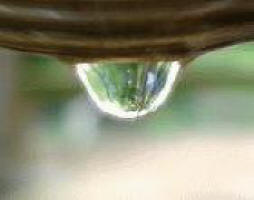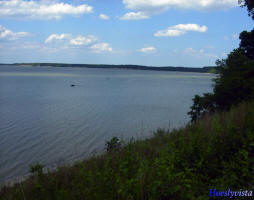 Diversification may help water supply problems
Diversification may help water supply problems
Increases in population and urbanisation are challenging current systems of water supply. A new study has assessed existing examples of alternative supply systems, such as wastewater reclamation, rainfall collection and desalination of seawater. It suggests that adopting several types of system may provide a better and more flexible solution.
Cities are extracting and importing more and more water. Since 2007, the EU has promoted a Water Hierarchy to cope with water scarcity, which prioritises reducing demand above all other measures. Alternative sources of water supply should be considered when all demand reduction options have been exhausted. For example, suppliers are using new technologies and strategies to make urban water supply more self-sufficient. Self-sufficiency is the percentage of total water demand of a given area that is sourced from that area.
Several options are already in use around the world to improve self-sufficiency and ensure efficient use of water, such as reclaiming wastewater, collecting rainwater and desalinating seawater. The use of economic instruments (e.g. incentives) is also important to stimulate efficient use of water through different technologies.
The study identified 113 examples of current projects that aim to increase self-sufficiency and the main drivers for increasing self-sufficiency. Direct lack of water caused by droughts or population growth is a major instigator, as is infrastructure, for example, when old pipe systems cause bottlenecks in water supply. Another driver is the demand for high quality pure water, such as in the electronics industry. Innovation and technical development may also lead to improvements in self-sufficiency. The researchers then selected 15 case studies, with self-sufficiency values ranging from between 15 per cent to 80 per cent, and analysed the different techniques to improve self-sufficiency.
Wastewater reclamation can be conducted either directly when it is used for non-drinkable uses such as irrigation, household, toilet flushing and industrial processes, or indirectly by recharging groundwater and surface water reservoirs, so that more water can be extracted. Desalination uses membranes to remove the salt from seawater and its use is growing as the costs of this technique fall. Rainwater collection from roof-tops can be used for toilet flushing, clothes washing and garden irrigation.
The study also identified a number of challenges to self-sufficiency initiatives. For example, some techniques require a fair amount of energy, which can contribute to total production costs, as is the case for large decentralised systems of wastewater reclamation and desalination that use membrane technologies. In comparison, household rainwater collection is more energy-efficient. Energy demands can be reduced by using renewable energy, for example by powering the water treatment by electricity from a wind farm.
The environmental impact of techniques is another challenge, for example, seawater intakes and outfalls could be damaging for marine wildlife. Also, sourcing drinking water from wastewater means that trace levels of chemicals are present in the water and, although assessments indicate they are not a risk individually, it is unknown whether they could become a risk when combined with other chemicals or after long time constant exposure. The public create another challenge as they are often reluctant to trust water that has been reclaimed, which means new initiatives must be preceded by public engagement with decision-makers.
In conclusion, the research suggests that no single technique will relieve problems in water supply. It suggests that the best solution may be to diversify and use several different techniques to overcome the different challenges. Wastewater reclamation and desalination may be reliable and stable, but rainwater collection may be more acceptable to the public and less costly.
| Contact information |
Rygaard, M., Binning, P.J. & Albrechtsen, H. (2011) Increasing urban water self-sufficiency: New era, new challenges. Journal of Environmental Management. 92:185-194.
(email: mryg@env.dtu.dk) |
|---|---|
| News type | Inbrief |
| File link |
http://ec.europa.eu/environment/integration/research/newsalert/pdf/223na5.pdf |
| Source of information | EC DG Environment / Rygaard, M., Binning, P.J. & Albrechtsen, H. (2011) Increasing urban water self-sufficiency: New era, new challenges. Journal of Environmental Management. 92:185-194. |
| Keyword(s) | water supply |
| Subject(s) | ANALYSIS AND TESTS , CHARACTERISTICAL PARAMETERS OF WATERS AND SLUDGES , DRINKING WATER , DRINKING WATER AND SANITATION : COMMON PROCESSES OF PURIFICATION AND TREATMENT , HYDRAULICS - HYDROLOGY , INFRASTRUCTURES , SANITATION -STRICT PURIFICATION PROCESSES |
| Geographical coverage | n/a |
| Working language(s) | ENGLISH |
 you are not logged in
you are not logged in





